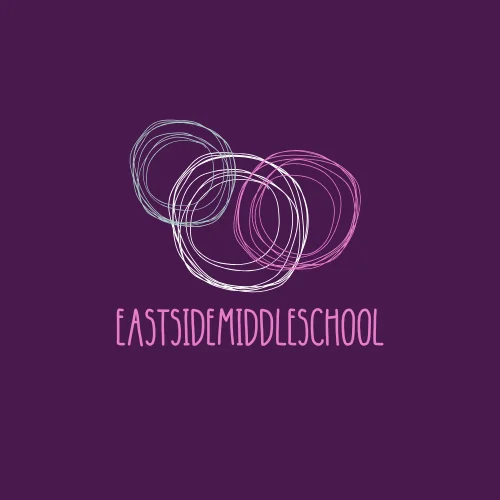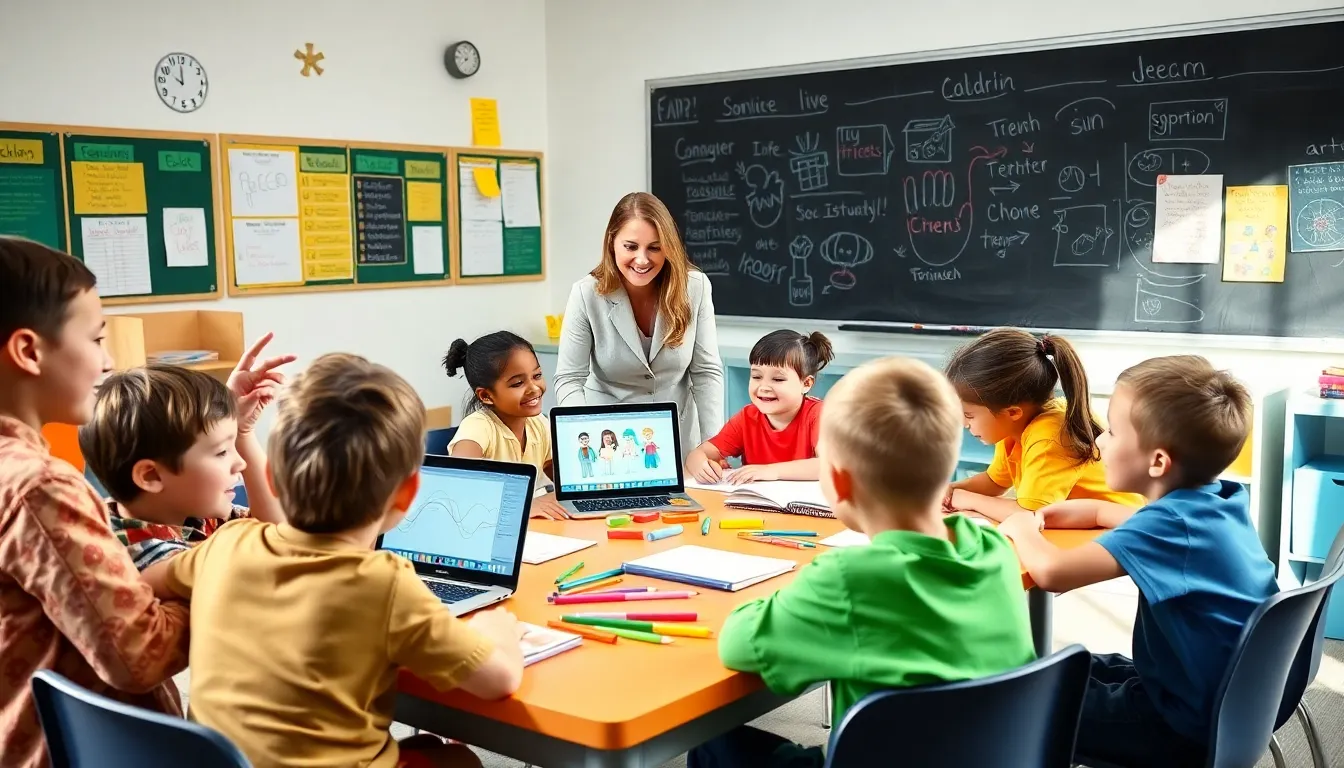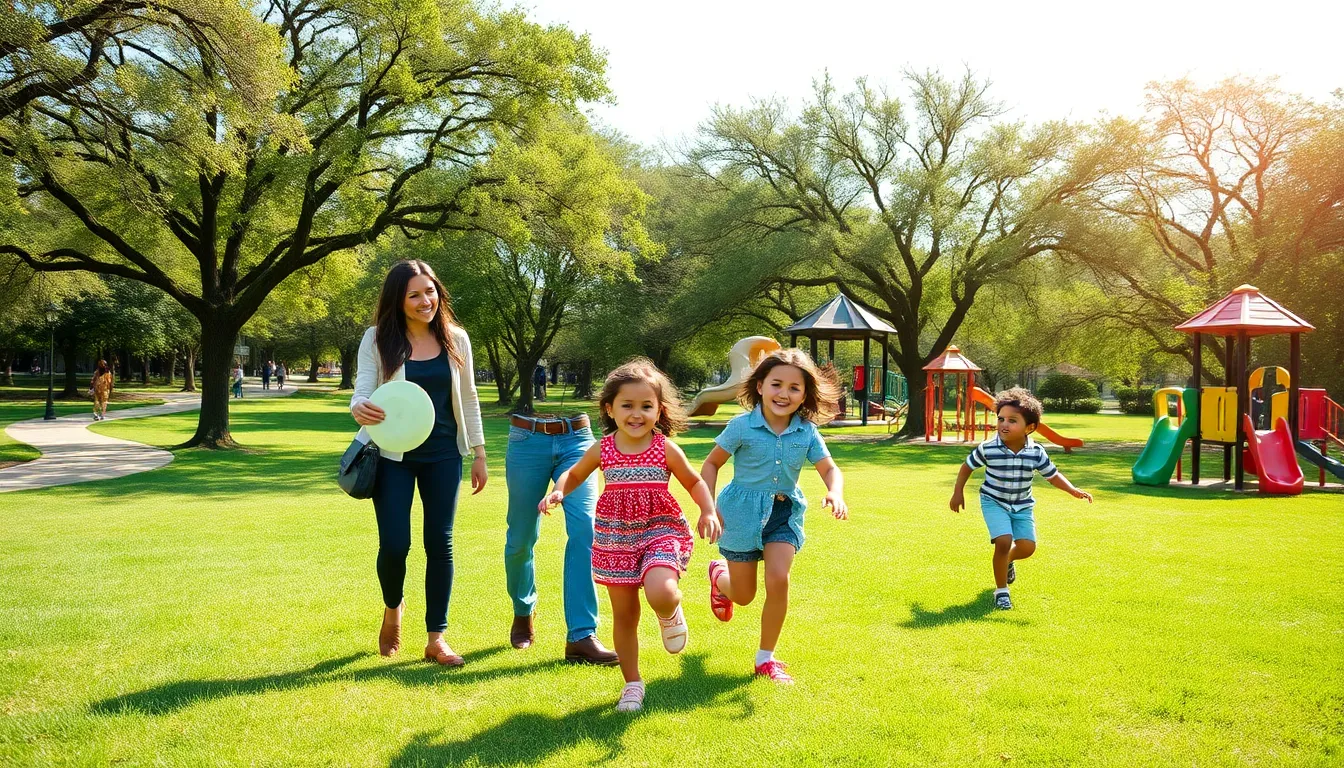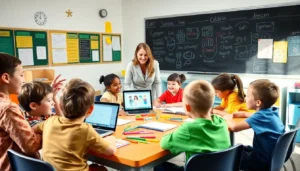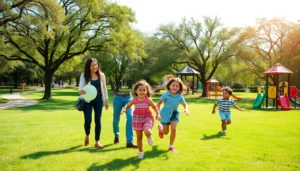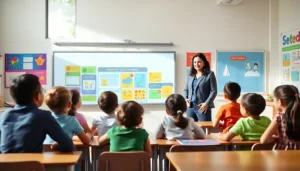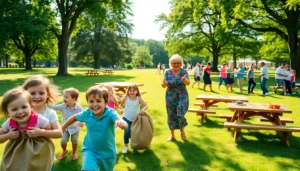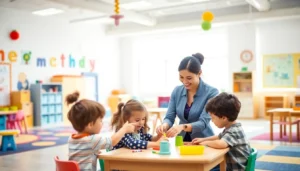In the world of education, group activities often get a bad rap. Some might think they’re just a clever excuse for teachers to sip coffee while students doodle. But let’s face it: group activities are the secret sauce that makes learning fun and engaging. They transform the classroom into a dynamic hub of collaboration, creativity, and—let’s be honest—occasional chaos.
Imagine a room buzzing with laughter, ideas bouncing off the walls, and students actually excited to participate. Group activities not only foster teamwork and communication skills but also help students tackle challenges together, making learning a memorable adventure. So, if you’re ready to swap out those boring lectures for lively group projects, buckle up! This article dives into the benefits of group activities in class and how they can turn even the most reluctant learners into enthusiastic participants.
Table of Contents
ToggleImportance Of Group Activities In Class
Group activities hold significant value in education by enriching the classroom experience. They encourage active participation and a lively learning atmosphere.
Enhancing Collaboration Skills
Collaboration skills develop naturally during group activities. Students learn to delegate tasks and share responsibilities. Working together fosters a sense of unity, making each student feel essential to the group’s success. Exposure to diverse perspectives encourages open-mindedness, as students must consider different viewpoints. Collaborative activities also highlight the importance of conflict resolution, teaching students to address disagreements constructively.
Fostering Social Interaction
Social interaction thrives in group settings, enabling students to connect meaningfully. Engaging with peers allows for relationship-building, which enhances overall classroom dynamics. Students practice effective communication by articulating ideas and listening to others. These interactions contribute to a sense of belonging, decreasing feelings of isolation among peers. Additionally, involvement in group work nurtures empathy, as students must recognize and respect the contributions of all group members.
Types Of Group Activities
Group activities encompass a variety of engaging strategies that promote teamwork and collaboration. The following sections outline popular types that enhance classroom dynamics.
Collaborative Projects
Collaborative projects involve students working together to solve problems or create presentations. Group members share ideas, allocate tasks, and utilize their strengths. These projects often lead to higher quality work due to diverse perspectives. Successful examples include science experiments and art installations. Such activities foster critical thinking and encourage students to communicate effectively. Each student contributes to the overall goal, reinforcing a strong sense of partnership.
Discussions And Debates
Discussions and debates stimulate critical thinking and encourage respectful discourse. In these settings, students voice opinions, defend viewpoints, and engage with classmates. Through structured formats, like Socratic seminars or formal debates, learners develop strong argumentation skills. Responsible listening is equally important; it promotes understanding and empathy. These activities deepen comprehension of complex issues while fostering a safe environment for expressing differing views.
Group Presentations
Group presentations provide an opportunity for students to showcase their learning collectively. In this format, individuals research a topic together, divide presentation duties, and prepare visual aids or handouts. As students speak in front of the class, they build confidence and public speaking skills. Engaging formats such as role plays or multimedia displays enhance audience involvement. Such activities also reinforce accountability, as peers depend on one another to perform well.
Benefits Of Group Activities
Group activities yield numerous advantages that enhance the classroom experience. Engaging in collaborative tasks fosters an environment where students can thrive academically and socially.
Improved Learning Outcomes
Students achieve better learning outcomes through group activities. Collaborative efforts often lead to deeper understanding of concepts. Working together allows individuals to explain ideas to one another, reinforcing comprehension. Diverse perspectives contribute to richer discussions, enhancing critical insights. This multi-faceted approach often results in higher retention rates. Research shows that students involved in group work score better on assessments.
Increased Engagement
Engagement levels rise significantly when students participate in group activities. Learning becomes more enjoyable and interactive, inspiring students to take an active role. This involvement reduces distractions and fosters a focused classroom atmosphere. As students collaborate, enthusiasm builds, encouraging involvement from even reluctant participants. Active participation nurtures curiosity and motivates individuals to delve deeper into subjects.
Development Of Critical Thinking
Critical thinking skills develop naturally during group activities. Analyzing differing viewpoints encourages students to question assumptions and build arguments. Engaging in discussions fosters skills like reasoning and problem-solving. Rather than accepting information at face value, students learn to think critically about concepts. Teamwork challenges individuals to defend their ideas while remaining open to constructive feedback. This dynamic environment cultivates a culture of inquiry and innovation.
Challenges Of Implementing Group Activities
Implementing group activities in the classroom presents various challenges. Some obstacles arise from time management and group dynamics.
Time Management Issues
Time management often proves difficult during group activities. Students may struggle to stay on task, causing projects to extend beyond allotted time. Tight schedules can lead to incomplete assignments, diminishing the educational benefits of collaboration. Each group member’s availability influences progress, particularly if they do not coordinate effectively. Additionally, teachers need ample time to guide and facilitate these activities. Lack of clear timelines can hinder meeting learning objectives.
Group Dynamics Conflicts
Group dynamics conflicts frequently arise among students during collaboration. Different personalities can clash, creating tension that affects group cohesion. Some members may dominate conversations while others remain disengaged, leading to frustration. Establishing equal participation poses another challenge for teachers. Miscommunication often results from these conflicts, hindering the overall productivity of the group. Addressing these issues promptly is essential to foster a positive learning environment. Ensuring students learn conflict resolution skills prevents future disagreements and enhances teamwork.
Strategies For Successful Group Activities
Successful group activities hinge on clear strategies that guide student engagement and collaboration. These strategies enhance the overall effectiveness of group work.
Setting Clear Objectives
Establishing specific objectives ensures students understand the goals of group activities. Objectives should align with learning outcomes and clarify what students must achieve together. Clear expectations reduce confusion and provide focus. Avoiding vague instructions boosts accountability among group members. When students know what is at stake, they are more likely to stay engaged and work effectively. Providing examples of expected outcomes helps reinforce these objectives and offers a clearer vision of success.
Encouraging Participation
Fostering an inclusive environment encourages every student to contribute. Implementing strategies like assigning roles helps ensure that no one dominates the conversation. Encouragement of diverse opinions enriches discussions and fosters collaboration. Using structured activities, such as round-robin sharing, promotes equal opportunities for input. Teachers can also create a safe space, making it easier for students to express ideas without fear of judgment. Amplifying student voices by recognizing contributions builds confidence and motivates ongoing participation.
Conclusion
Group activities in class play a crucial role in transforming the educational landscape. By fostering collaboration and engagement, they create an environment where students thrive. These activities not only enhance learning outcomes but also cultivate essential skills like teamwork and critical thinking.
As educators embrace interactive methods, they pave the way for more meaningful student interactions. Addressing the challenges that arise ensures that group dynamics remain positive and productive. Ultimately, when implemented thoughtfully, group activities enrich the classroom experience, making learning enjoyable and impactful for all students.
